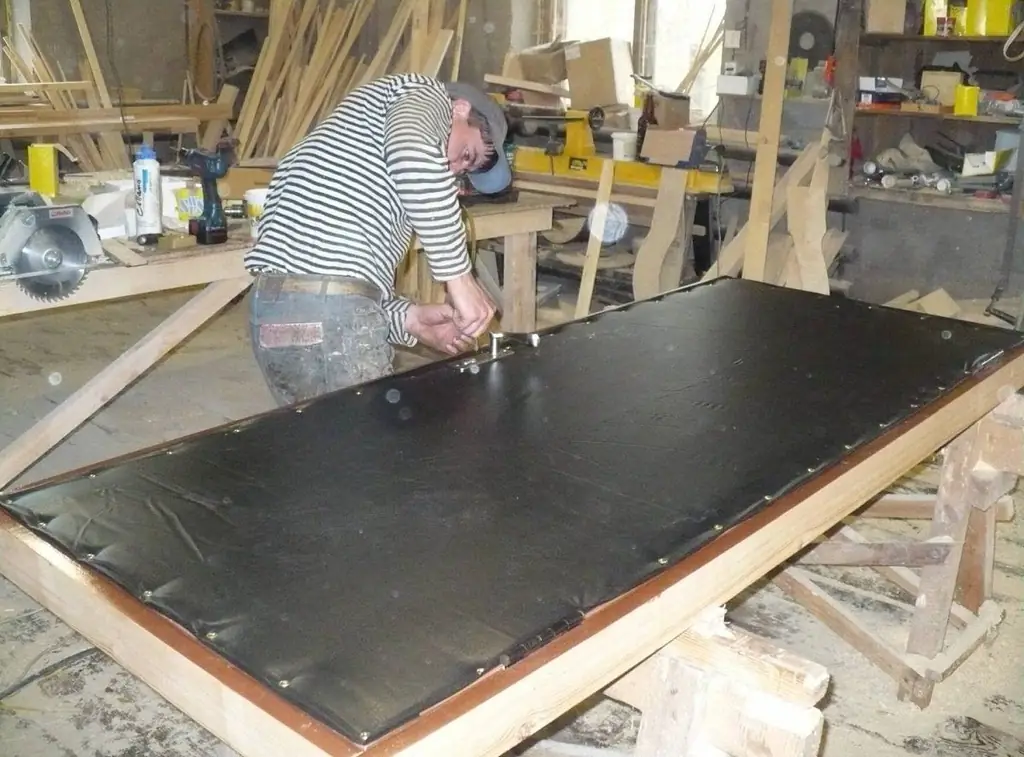
Table of contents:
- Author Bailey Albertson [email protected].
- Public 2023-12-17 12:53.
- Last modified 2025-06-01 07:32.
Do-it-yourself door trim

Sheathing is an affordable and simple type of repair, with which you can not only decorate the door leaf, but also solve problems with insulation and sound insulation. Both long-established and new doors are sheathed. The procedure does not take a lot of time and money. And with a competent approach and the correct selection of materials, the upholstery will change the appearance and insulating qualities of the doorway in a positive direction.
Content
-
1 Varieties of materials for door decoration, their advantages and disadvantages
-
1.1 PVC film
1.1.1 Video: DIY beautiful door
-
1.2 Laminate
1.2.1 Video: laminate on the door - beautifully and inexpensively renovating an old door
-
1.3 MDF
1.3.1 Video: replacing the MDF panel on the entrance metal door
-
1.4 Wood
1.4.1 Video: insulating a metal door with clapboard
-
1.5 Veneer
1.5.1 Video: oak veneering door leaf
-
1.6 Paint
1.6.1 Video: painting an interior door
- 1.7 Decorative stone
- 1.8 Dermantin
- 1.9 Viniplast
-
- 2 What tool is required for door trim
-
3 Preparatory work
3.1 Video: how to remove an interior door
-
4 Door trim - instructions and work procedure
-
4.1 Cladding with laminate
4.1.1 Video: laminate on the door
- 4.2 Facing with MDF, clapboard or slats
- 4.3 Technology of finishing doors with veneer
-
4.4 Upholstery of doors with dermantine or vinyl leather
4.4.1 Video: replacing the dermantine on the old door
-
Varieties of materials for door decoration, their advantages and disadvantages
Sheathing is used for two types of doors - wood and metal. Glass canvases, as well as plastic ones, are not designed for additional coatings. Sometimes they are covered with tinted or decorative films, but this is not classified as cladding. In addition, two types of door finishes can be distinguished - external and internal. The first serves to increase the protective properties and durability of the door, the second is more decorative.
The topic of cladding for custom-made entrance doors is especially relevant
Self-application of the outer layer has several advantages over the finished product. First, the customer sees the quality of the door leaf and this saves him from any surprises in the future. Secondly, it becomes possible to choose just such a design that matches the taste and financial capabilities of the door owner.
Each material has its own characteristics and characteristics. The choice depends on the operating conditions and the purpose of the door.
PVC film
Pasting a door leaf with foil is perhaps one of the easiest ways to decorate a door. The vast majority of PVC coatings are produced on a self-adhesive base. To apply it to the canvas, it is enough to remove the protective paper layer and evenly stick the PVC on the door. Most often, such a coating is of a decorative nature, since the film is sensitive to mechanical damage - scratches, cuts, etc. However, there are films of increased strength with anti-vandal and even armor properties. Such as, for example, VINORIT thermal film made in Israel. It is considered one of the most resistant coatings that protect the door surface from the external environment.

The anti-vandal film covers not only the door leaf, but also platbands and thresholds
It is recommended to install the film on metal entrance and interior doors with a flat surface and a sheet thickness of at least 2 mm. If there are irregularities and roughness on the plane of the door leaf, they must first be eliminated. Otherwise, air will get under the film and this will lead to its gradual peeling.
The advantage of PVC films is considered to be simple installation and a wide range of colors of products. The exterior design mimics any surface, from wood grain to marble. In addition, buyers are pleased with the low price (except for expensive anti-vandal films, which belong to the middle price segment).
We have already mentioned the disadvantages:
- Difficulties arise when covering a door leaf with a relief on the surface.
- Low strength and "vulnerability" - an awkward movement can break the integrity of the coating.
Video: DIY beautiful door
Laminate
One of the fairly common door cladding materials is laminated panels. They consist of a pressed chipboard base coated with a special film at the factory (at high temperatures). The panel is believed to be water-repellent and anti-static. But in practice, this is not the case. Under conditions of a drop in humidity and temperature, wood fibers swell and deform. This means that the panel can only be used for interior decoration. The exceptions are regions with a predominantly dry climate and a small temperature amplitude.

Laminated panels are produced in a large assortment: you can choose the material of the required size, texture and color
The advantage of this coating is a wide range of exterior colors and patterns. In terms of design, laminated panels occupy one of the leading places. The finish is durable, even with a small thickness (6-7 mm) it withstands mechanical loads well and prevents the door from freezing in cold weather. The price depends on the thickness of the canvas and the external relief. Panels made in the form of a panel or lining are naturally more expensive. Ready-made overlays (or as professionals call them - cards) are selected according to the size of the existing door. Self-adjustment of the width and height of the door leaf is practiced. Installation is carried out on a frame, less often on glue or by direct attachment to the sash.

Doors finished with laminate are practical and reliable
Video: laminate on the door - beautifully and inexpensively renewing the old door
MDF
Homeowners often prefer MDF door finishes. This material has recently come into use in construction and represents pressed sawdust impregnated with resinous adhesives. MDF panels have a number of attractive properties:
- the ability to give any relief, shape and color;
- resistance to biological decay and mold;
- low thermal conductivity;
- moisture resistance is higher than that of fiberboard and chipboard;
- environmental Safety;
- low price.
The disadvantages of the material include its large weight: the mass of a sheet of 2.8 x 2.07 m is 72.3 kilograms. This must be taken into account when selecting MDF panels for doors. Since the hinges are designed for a certain workload, it is not recommended to exceed it. It is advisable to use a door hanger with a good safety margin. When using MDF in the exterior decoration of entrance doors, a prerequisite is the protection of the doorway with a canopy (visor). Direct water ingress will quickly lead to swelling and deformation of the material.

The presence of a canopy over the entrance door, faced with MDF, is a prerequisite for long-term operation
Video: replacing the MDF panel on the entrance metal door
Wood
Natural solid wood is one of the most attractive types of finishing materials. Wood enjoys well-deserved popularity for its austere and at the same time solid appearance. The polished front side reflects the fiber structure, pleasing to the eye and calming the psyche. In addition to outstanding decorative qualities, wood has excellent heat-insulating properties and absorbs noise well.
In practice, several types of wood sheathing are used:
-
Reikami. The main advantage lies in the versatility of the cladding. A variety of patterns and ornaments are laid out with a thin strip of the same type. The number of combinations tends to infinity. The simplest options are vertical, horizontal or diagonal installation. Such facing is within the power of any person. Fastening is carried out in several ways:
- self-tapping screws directly to the door leaf;
- self-tapping screws to a pre-assembled solid shield on the surface of the door leaf;
-
metal staples (the slats must be thin enough for the staples to pierce through).

Slatted doors A variety of design effects are achieved with a combination of slats of different widths and colors
-
Clapboard. These are, in fact, the same slats, but equipped with longitudinal connections. Each board has a groove on one side and a spike on the other. With their help, individual elements are linked into a single plane. The fastening of the lining is carried out in the same way as the slats - on a wooden frame or shield. The disadvantages of lining and conventional slats include the need for regular maintenance - the wooden surface must be treated with varnish or other moisture-repellent compounds. If you neglect these procedures, the wood will darken very quickly and become covered with small cracks.

Lining door Doors faced with clapboard have a very attractive appearance and good thermal insulation
-
Wooden cards. This coating is the leader among luxury door finishes. Various patterns or individual fragments are collected with the help of cards, which can carry an independent semantic load. Wood stains are used to give the wood a variety of tones and textures. For example, impregnating an inexpensive pine tree with a dark green color scheme, you get a good imitation of oak. In addition, today glued wood is widely used - it is practically insensitive to moisture and temperature extremes. Unlike natural wood, the glued card is processed in a dryer and has a moisture content of no more than 8-12%. Gluing is done under pressure using waterproof adhesives. The only drawback noted by experts is the high price.

Covering the door with wooden cards Cardboard wood cladding simulates any pattern on the door surface
Video: insulating a metal door with clapboard
Veneer
Natural veneer is a thin cut of expensive solid wood. The most common way to cut veneer is planing. The material is produced on factory equipment, the thickness is on average 1-1.5 mm (the greater the thickness, the more expensive the veneer, and it is more difficult to work with it at home). A prerequisite for the installation of veneer is a flat smooth surface of the door leaf. For this, waterproof plywood is most often used. And facing work is called veneering. The benefits of veneer are obvious. A thin layer of expensive wood is glued onto an inexpensive surface - and the door looks very respectable. With proper installation, the differences are noticeable only to experienced craftsmen.

Veneer creates a unique pattern on the surface of the door leaf
Like other natural wood products, veneer coverage needs protection from sudden changes in temperature and direct exposure to moisture. For this, the surface is covered with water repellents and varnishes. Moreover, this should be done systematically, at intervals of 3-5 years or as appropriate (as the protective layer wears out).
Video: oak veneering door leaf
Paint
Painting the door leaf is probably a well-known operation to everyone. This is the simplest and most common solution for sash renewal. Dyeing does not require any special knowledge and skills. Even a child can apply a layer of paint to the door with a brush and roller. Strictly speaking, it is difficult to attribute the paint to the upholstery material, here we consider this option as one of the alternative. Those who decide to resort to just this method of door restoration should pay attention to the choice of the coloring composition, because today there are so many types of paint that it is easy to get lost in it. After choosing the color of the coating, you need to determine the degree of water resistance of the paint. For the outer side, materials with maximum water-repellent properties are used. These are alkyd, acrylic and nitro enamels. Brands of "ship" and yacht paints have proven themselves well.

Alkyd-urethane coatings withstand atmospheric stress for a long time
For metal doors, hammer and powder coatings are also used, containing metal dust in their composition. Among other things, such a dye has enhanced anti-vandal properties - it is difficult to scratch, it is impossible to set fire to or destroy with the help of chemical reagents. It should be borne in mind that some types of powder paints require baking at a high temperature. This means that for a high-quality application, you need to contact a specialist.

Powder paint forms a beautiful and durable coating with good anti-vandal properties
Video: painting an interior door
Decorative rock
Most often, acrylate-based artificial stone is used to decorate the doorway and slopes. But nothing is impossible if there is a desire to cover the door leaf itself with a stone relief. For this, there is a special group of products that imitate natural stone. Thin plates (shingles) are fixed to the flat prepared surface of the sash using tile adhesive. In this case, it is necessary to correctly calculate the total weight of the canvas and relate it to the functionality of the hinges. To avoid sagging the door, additionally install a third or even a fourth pair of hinges. To prevent sudden movements from causing the stone plates to break off, the doors are equipped with a door closer. Its power is selected in such a way as to exclude involuntary slaps and bangs of the door against the frame.
In practice, such cladding is used very rarely. Partial coverage of individual areas is more often used. There are options for fixing artificial stone panels with metal moldings and corners.

Natural stone tiles are used to decorate doorways inside and outside apartments
The indisputable advantages of stone door finishing are:
- durability - the service life of the coating is practically unlimited;
- unusual appearance of the door block;
- ease of use - it is cleaned of dust and washed with simple means;
- environmental friendliness of the material.
The disadvantages include the high cost and the possibility of shedding the stone in the case of poorly carried out installation work.
Dermantin
The grandfather's method of finishing, widely used in cases where financial opportunities are limited. Upholstery dermantin is a substitute for natural leather made from vinyl and its derivatives. The cost of the material is very affordable, and the installation process on the door surface takes several hours at most (there is no need to remove the door leaf from the box, which is very convenient). Nevertheless, despite the simplicity of manufacture, such upholstery regularly performs its functions - it lowers the level of noise penetrating into the room and reduces freezing of the sash. The positive aspects include easy maintenance of the coating - it can be washed with ordinary detergents.

Dermantin is ideal for finishing doors inside the entrances of apartment buildings
The big disadvantage of dermantin is its "vulnerability". Lightly or carelessly, the material can be pierced and even cut. Moreover, for restoration, you will have to change the entire upholstery. Intruders can deliberately damage the dermantin - set on fire, cut, etc. Zones around the keyhole are especially often affected.
Installation is carried out on a frame base or by gluing directly onto the door leaf.
Viniplast
We are talking about a modern material - plastic, which is used for door cladding. The composition of vinyl plastic contains light and heat stabilizers that prevent destruction when exposed to solar radiation. The thickness of the panels is from 1 to 3 mm, which is ideal for self-assembly - the panel weight is small, you can cut the workpiece with an ordinary hacksaw. A special brand is used for doors - VD (decorative vinyl plastic). The board is a two-layer plate - the wood-fiber base is covered with a thin but durable PVC layer. Positive qualities of the product:
- resistance to temperature fluctuations in the environment;
- resistance to mechanical stress;
- safety for human and animal health;
-
low cost.

Vinoplast door finishing At a low cost, vinyl plastic perfectly imitates an expensive finish
What tool is required for door trim
Different finishing materials will require different tools.
So, for sheathing the door leaf with clapboard, wooden lath or laminate, you will need the following equipment:
-
a hacksaw for wood or an electric jigsaw;

Hacksaw for wood For the installation of the cladding, a hacksaw with a small tooth is used without divorce
- drill or screwdriver;
-
measuring instruments - ruler, tape measure, square (90 o);

Construction tape Measure the dimensions with a tape measure and transfer them to the blanks
- marker or construction pencil for marking and cutting material;
-
other carpentry hand tools - files, chisels, drills, etc.

Carpentry tool set A set of quality hand tools speeds up the process of finishing the door leaf
If the same types of upholstery are mounted on metal doors, the following will be added to the list:
- drills for metal of various diameters;
- grinder, with the help of which the sash surface is leveled (grinding disc included).
For painting it is enough to stock up:
-
paint roller for painting;

Paint roller The size and material of the roller is selected according to the ink used
- short and long hair brushes;
- foam swabs (if the paint is applied unevenly, in separate areas or through stencils).
Installing stone plates on the canvas will require a special spatula-comb and a mixer to stir the glue. In addition, you need a tile cutter with a powerful cutting edge.

Electric tile cutter allows you to cut stone of any thickness
For veneering (natural veneer stickers) and fixing the finished card-panels, additional tools are used - an iron and a rolling roller for gluing edges.
Preparatory work
Before starting work, it is necessary to prepare the workspace and the door leaf itself. In most cases, it is necessary to remove the door leaf from the hinges. Since the hinges are different, you must first become familiar with the design of the suspension.
-
If the hinges are collapsible (removable), it is enough to dismantle the canvas:
- open the door at 45-90 o;
- using a pry bar or other convenient lever to lift the sash up;
- carefully remove the canvas from the hinges and lower it onto the floor or a specially prepared surface, for example, on a construction trestle.
-
If the door construction is non-separable, you should:
- open the door at 45-90 o;
- Having gained access to the hinge fastening, use a Phillips screwdriver to smoothly release the suspension fixation. First, the upper loops are released, then the lower ones;
- completely detach the blade from the frame and lay it on the floor.
Before removing the sash, you need to prepare a convenient platform for work. Clear space of excess furniture, remove all foreign objects. It is desirable that there is a zone around the canvas with a size of half a meter for free movement during installation work.
If a used door is being restored, the old casing is removed - dermantin, cladding panels, etc. All fittings are dismantled beforehand - overhead lock strips, door handles, peephole, door closer, etc.
Video: how to remove an interior door
Door trim - instructions and work procedure
Different types of finishes have their own characteristics, which we will talk about below.
Laminate cladding
Laminate cladding is quite fast. It takes more time for the glue to dry than the assembly itself.
- A panel is assembled from a laminate of specified dimensions. The length and width must exactly match the dimensions of the door leaf. The permissible error is 2-3 mm.
-
Along the perimeter of the sash, wooden slats are attached to self-tapping screws, which will serve as a frame. The more slats are used, the stronger and more reliable the laminate will be.

Wooden beams Smooth and planed bars are used for the frame
-
A special glue is applied to the surface of the slats, for example, "liquid nails".

Glue "liquid nails" Glue "liquid nails" is sold in any convenient package
- The assembled shield is superimposed on the frame and pressed with a load. To distribute the burden evenly over the entire area, use additional wide boards.
-
In the corners - where the laminate will cover the decorative corner - you can strengthen the fastening with small screws with a flat head (or make a shallow sweep).

Self-tapping screw installation In order for the self-tapping screw cap not to go beyond the surface of the canvas, it must be drowned in a pre-made recess
-
After the glue has dried (standard time is 24 hours), remove the load and mount the edge corners. They are fixed with the same glue as the laminate board.

Decorative corner Decorative plastic corner conceals uneven laminate ends
- At the last stage, the fittings are installed in place, after which the finishing of the door leaf can be considered complete.
After checking the operation of the doors, adjusting measures are carried out. So, sometimes it is necessary to adjust the course of the loops or the work of the locks. Taking this opportunity, lubricate all the moving parts of the door block. To do this, use WD-40 aerosol or graphite grease (if the door is massive).

Aerosol WD-40 is used to lubricate all types of rubbing surfaces
Video: laminate on the door
Facing with MDF, clapboard or slats
Fixation of wood-based materials, which are panels or prefabricated structures such as lining or strips, is carried out using a supporting frame. It is mounted first and then sequentially sheathed. The procedure is as follows.
-
Wooden bars are installed along the perimeter of the door leaf. Their size depends on several factors:
- the presence of insulation between the canvas and the facing material. In some cases, when it is necessary to lay a layer of foam or mineral wool, a space of up to 40 mm is required (on the entrance doors, for example). Accordingly, a bar with a thickness of 40 mm is chosen for the frame. If the insulation is thin, for example, foam rubber 10-15 mm, then put a bar 10-15 mm thick;
-
cladding masses. The more massive the panel, the stronger (and, therefore, thicker) the timber is used.

Door insulation In metal doors, wooden bars are attached to the stiffening ribs
- Intermediate and auxiliary supports are mounted between the main bars. The smaller the raster pitch, the more reliable the fastening of the cladding. In addition, they are guided by a given skin pattern. Longitudinal and transverse bars are often inserted, which serve as a support for small details of the pattern.
- When the frame is ready, sheathing begins with slats, clapboard or finished panels. It is customary to move from the bottom up, but this order is not of fundamental importance. To a greater extent, the course of the cladding depends on the location of the locks on the panels (or grooves on the lining).
-
The fixation is done with screws or special invisible nails (without heads). The lining is fixed with special brackets - clamps, which are invisible after the installation is completed.

Installation of lining on clamps After installing the next board in the groove, the fasteners will become invisible
- At the end of the sheathing, fittings are installed on the canvas and the sash is returned to the hinges.
I will share my personal experience. A qualified craftsman, with all the materials available, installs the lining on the door leaf in no more than 2 hours. The assembly on a metal door takes a little more, since to fix the frame, you need to drill holes and make additional indentations in the bars. It is convenient to use self-tapping screws for metal with a drill at the end - this significantly speeds up the process of installing the bars.

The use of screws with a drill at the end saves time when sheathing a metal door
Veneer door finishing technology
To finish the doors with veneer at home, you will need an iron, preferably heavy (cast iron).
-
Veneer processing begins with the selection of the desired pattern. For this, strips of self-adhesive material are laid on the door leaf, located horizontally. Fit the lines of the texture. When the drawing is completely formed, the stripes are numbered so that later there is no confusion.

Veneer selection The color and texture of the veneer are matched to the overall design of the door
-
The ends of the door leaf are pasted over. For this purpose, strips are cut with a width equal to two thicknesses of the door leaf. The end part of the door is leveled, all irregularities and protrusions are removed from it with a chisel. After fixing the veneer, the excess is carefully trimmed with a sharp knife or chisel.

Veneer sticker on the door End strips must have a width equal to twice the thickness of the door leaf
- Sheathed the plane of the door leaf. The prepared and numbered strips are laid in the desired order. Gradually freeing the underside of the paper that protects the adhesive layer, fix the veneer on the sash.
-
When the entire canvas is pasted over, iron the entire plane with a hot iron (through a layer of paper). At the same time, special attention is paid to the joints - gaps and overlaps are not allowed between them. If the substrate is a metal surface, it is pre-treated with sandpaper (no. 80) for better adhesion.

Heat treatment of veneer For better adhesion of veneer strips, edges are fixed with paper tape
-
After the glue has cooled, the veneer is coated with varnish or other water-repellent compounds. For best results, apply at least two coats.

Veneer varnishing If roughness occurs on the veneer surface, they are removed with sandpaper.
Door upholstery with dermantine or vinyl leather
In order for the dermantin to look beautiful, a lining material is used, which at the same time insulates the doors. As a rule, it is sheet foam rubber or synthetic winterizer. A well-proven material such as foil isolon.

Izolon - a porous, waterproof material for insulation - used as a gasket for door trim
The stages of upholstery work are as follows.
- Laying padding polyester. The insulation is attached to the canvas with glue or metal staples using a stapler.
- Door leaf markings. The middle axis is located, from which the dermantin fixation begins.
- The canvas of dermantine is being cut. Its dimensions should be 5 cm larger on all sides.
-
The first row of nails is pushed through the center of the door. Subsequent rows go to the right and left of the middle. To prevent the material from sagging, you need to pull it evenly as it is fixed.

Door trim with dermantin Various faux leather patterns are created using decorative cord and furniture nails
-
Having reached the edge of the door, the dermantin is bent in the form of rollers, which are nailed exactly along the edge of the canvas. Another option is to install a plastic or aluminum profile (according to the stretch ceiling principle). The advantageous side of using the profile is the clear outline of the canvas. The L-shaped profile is used for both wooden and metal doors. Fastening is carried out using self-tapping screws or glue (or both at the same time).

L-profile Plastic profile used for door edging
- To improve the appearance, a decorative cord is laid between the nails.
Video: replacing dermantin on an old door
We examined the main methods of finishing the door leaf with various materials. There are no legal restrictions on this issue and there is always room for improvisation. Masters with great experience recommend that you always be guided by common sense and wisely use the properties of a particular type of finish. Indeed, the duration of the service life of the doors and the simple human comfort in the house depend on this.
Recommended:
Door Upholstery With Dermantine: Choice Of Material, Tools And Stages Of Work

What is leatherette, its features, advantages and disadvantages. How to choose a material. Different methods of upholstering the door with leatherette and the order of work
Slopes For Entrance Doors And Their Finishing: The Choice Of Material And The Order Of Installation By Hand
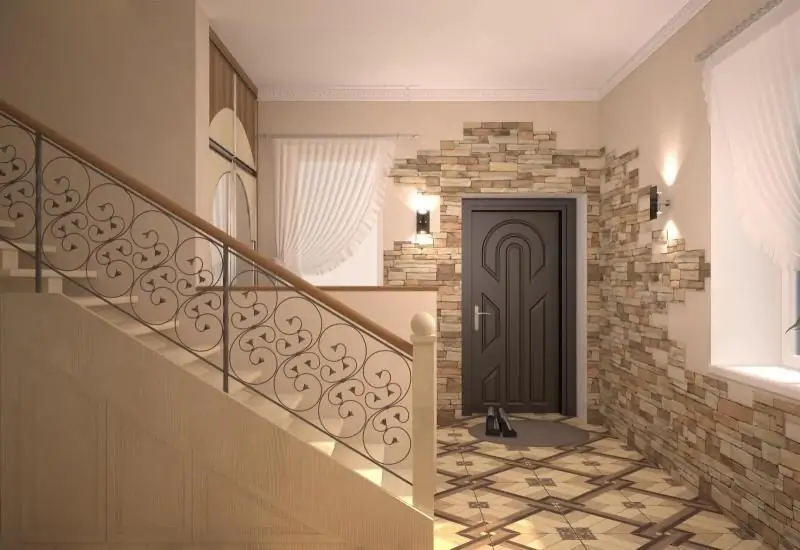
Features of the slopes of the entrance doors. Materials used to create slopes. Different ways of mounting materials on the slopes of entrance doors
Repair Of Metal Roofing, Including A Description Of Its Main Stages, As Well As Material And Tools For Work
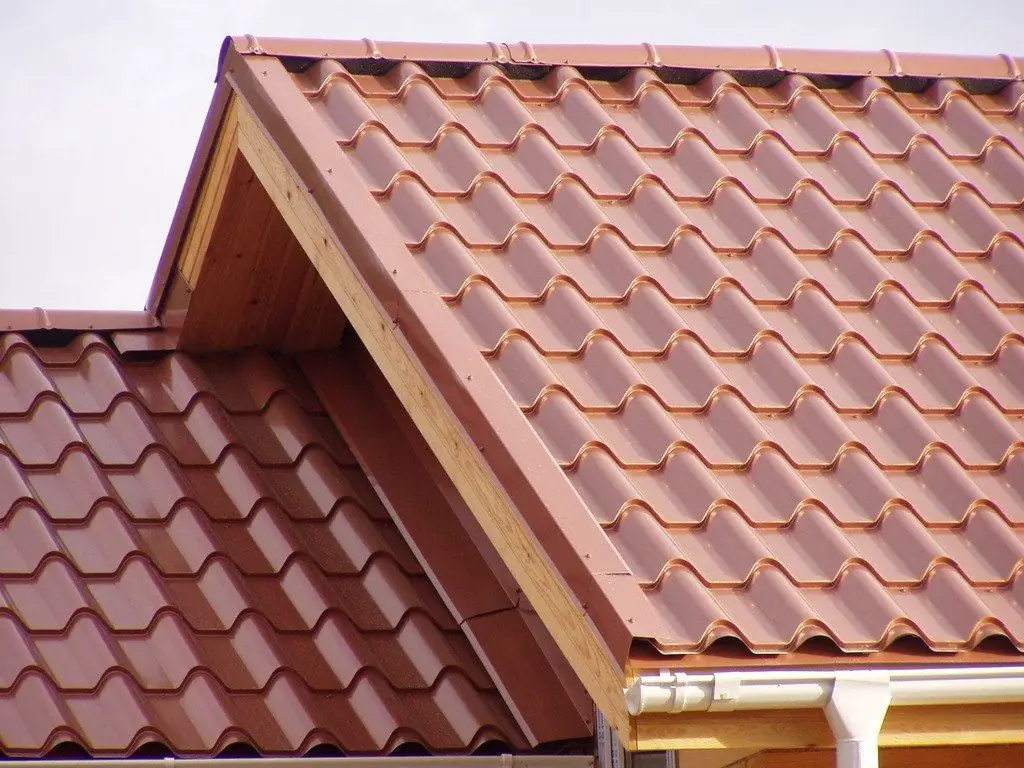
Methods and materials for the repair of metal roofing. What tool is needed and step-by-step instructions for eliminating roof breakages
Repair Of A Soft Roof, Including A Description Of Its Main Stages, As Well As Material And Tools For Work
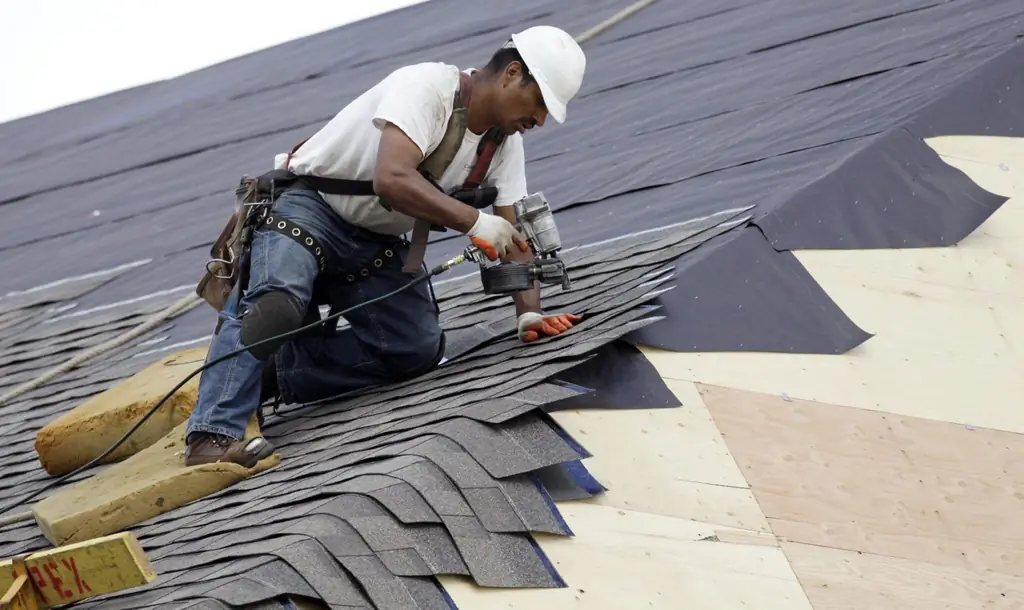
Diagnostics of the condition of the soft roof. Repair types and their main features. A brief overview of roofing materials and recommendations for their selection
Flat Roof Repair, Including A Description Of Its Main Stages, As Well As Material And Tools For Work
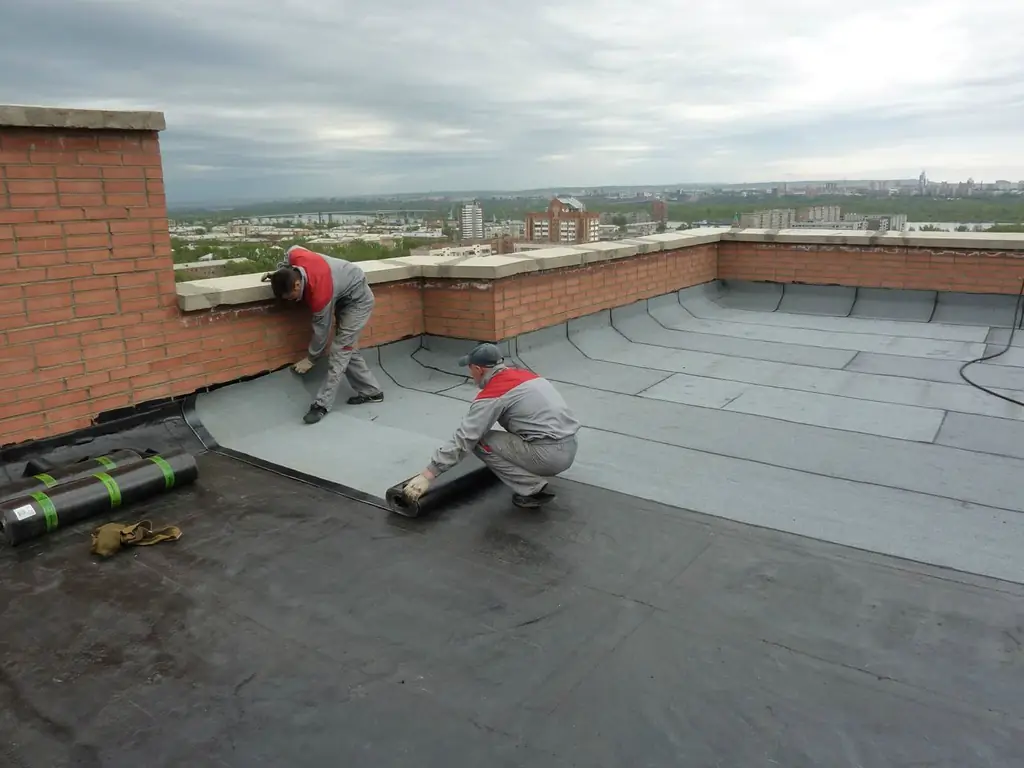
A brief description of the types of flat roof repair. Recommendations for the selection of roofing materials. Technology for eliminating various defects on flat roofs
